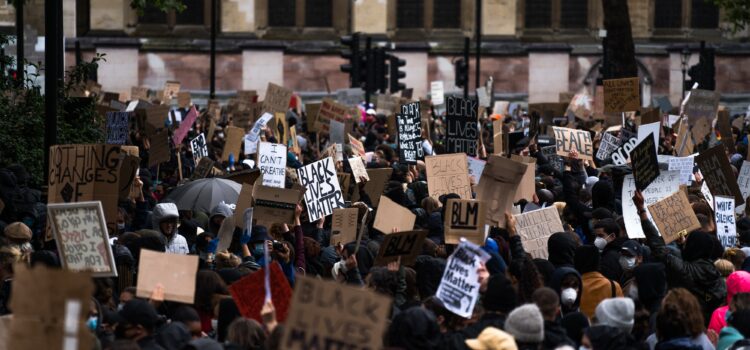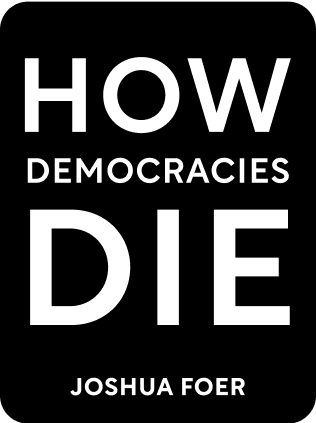

This article is an excerpt from the Shortform book guide to "How Democracies Die" by Steven Levitsky and Daniel Ziblatt. Shortform has the world's best summaries and analyses of books you should be reading.
Like this article? Sign up for a free trial here .
What is the meaning of identity politics? How do identity politics shape our political landscape today?
Identity politics have shaped everything about modern politics. Identity politics, meaning you affiliate politically with those you identify with racially, culturally, or otherwise, can increase polarization both in political parties and in our culture.
Read more about the identity politics meaning and how it affects us today.
Identity Politics Meaning and Asymmetric Polarization
This polarization of the parties is about far more than traditional disagreements over political issues. Polarization reflects deeper and more fundamental divisions in society, like race, religion, sexuality, and culture. These are not new forms of division by any means, but never before have they been folded so neatly into the structure of the two-party system. Partisan affiliation increasingly encompasses these other, more emotionally resonant forms of identity. This all leads to identity politics, meaning that who we are shapes what we believe.
The Republican Party has become overwhelmingly the party of white Christians. The Democrats, meanwhile, are increasingly the party of secular, urban non-whites. Thus, one’s political identity is about far more than just beliefs about public taxing and spending policy—it is about one’s core identity and set of values. This makes the parties more and more unrecognizable to one another—and less and less willing to extend mutual respect and institutional forbearance to one another.
Although these homogenizing trends have played out in the coalitions of both major parties, they have been far sharper in the Republican Party. The Democrats have certainly drifted leftward on economic and social issues; but the GOP has swung far more to the right. What accounts for this asymmetric polarization? There are three key factors:
- The influence of right-wing media
- The power of conservative interest groups
- The cultural homogeneity of the party’s base
Right-Wing Media
Partisan media on the right like Fox News and Breitbart have a far stronger hold on Republican voters than left-leaning media does on Democratic voters. Indeed, 69 percent of GOP voters report being regular viewers of Fox News. This greatly shapes opinion within the party.
Moreover, conservative television and talk-radio has proven adept at pressuring those GOP politicians who dare to deviate from party orthodoxy. There is simply no comparable mechanism within the Democratic Party that exercises this degree of influence over both voters and officeholders.
Conservative Interest Groups
Republican politics are also shaped by a network of powerful and well-funded conservative interest groups that put pressure on GOP officeholders to hold the line on ideology. One prominent example is the group Americans for Tax Reform, headed by longtime activist Grover Norquist.
Norquist’s group has successfully pressured nearly every Republican member of Congress to sign a “no tax” pledge, committing them to oppose any form of federal revenue increase. These pressure groups help to shape party orthodoxy, enforce ideological uniformity, and discourage norms of mutual toleration and institutional forbearance within Congress.
Cultural Homogeneity
Finally, we must turn to the racial and cultural homogeneity of Republican voters themselves and how it plays into identity politics and its meaning. Today, the GOP is overwhelmingly the party of white Protestant voters. For most of the country’s history, this group comprised the majority of the electorate and sat atop the social and economic order. But in a few short decades, this dominant position has collapsed, and white Protestants (and, increasingly, white Christians of all denominations) comprise a minority of the electorate.
This has given rise to a siege mentality within this swath of voters. They increasingly feel embattled by the profound social and cultural changes that have swept the country. Social surveys show that white Christians believe the country is slipping away from them and that they see themselves as the “real Americans” (i.e., native-born, English-speaking white, Christian). Thus, birtherism and the politicians who exploited it were tapping into something very potent for a lot of white voters—a sense of loss for a country they no longer recognized.

———End of Preview———
Like what you just read? Read the rest of the world's best book summary and analysis of Steven Levitsky and Daniel Ziblatt's "How Democracies Die" at Shortform .
Here's what you'll find in our full How Democracies Die summary :
- How shared norms are essential for preserving democracy
- Why the Trump presidency threatened those shared norms
- Why democracy goes beyond individual leaders and parties and must be a shared enterprise among committed individuals






